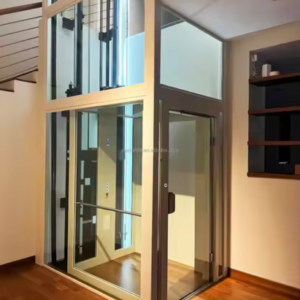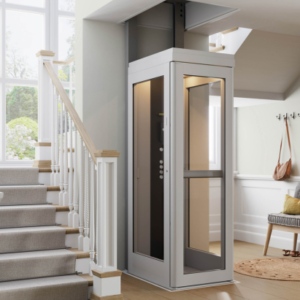Elevators Company in Nigeria
Elevators are vertical transportation systems used in residential, commercial, and industrial buildings for efficient movement between floors. They operate using different mechanisms such as traction, hydraulic, and pneumatic systems. Elevators improve accessibility, enhance convenience, and ensure safety with advanced features like emergency brakes, door sensors, and backup power systems.
Product Description
Types of Elevators: Understanding Vertical Transportation
Types of elevators are vital vertical transportation systems found in residential, commercial, and industrial buildings. They enhance accessibility, improve functionality, and provide convenience in multi-story structures. Over the years, elevators have evolved with advanced technology, ensuring increased safety, efficiency, and comfort for passengers.
Different Types of Elevators and Their Uses
Different types of elevators cater to specific needs. Traction elevators, using steel ropes or belts, are ideal for high-rise buildings due to their speed and efficiency. Hydraulic elevators, which operate with a fluid-driven piston, are best suited for low- to mid-rise buildings. Pneumatic elevators, powered by air pressure, are space-saving and often used in residential settings. Machine-room-less (MRL) elevators, without a dedicated machine room, are increasingly common in modern structures.
How Different Types of Elevators Work
Elevators operate through a combination of mechanical, electrical, and electronic components. Traction elevators feature motors that move steel cables, with counterweights balancing the load. Hydraulic elevators function by pumping fluid into a cylinder to lift the cabin. Pneumatic elevators create vacuum pressure to raise and lower the cabin. Sophisticated control systems manage speed, stopping accuracy, and safety mechanisms.
Installation and Space Considerations for Elevators
The installation process varies based on factors such as building design, available space, and usage. Traction and hydraulic elevators require dedicated shafts, while pneumatic and MRL elevators save space. Retrofitting elevators into existing buildings may involve structural modifications, while new construction projects can incorporate elevator shafts from the outset. Professional installation ensures compliance with safety standards.
Safety Features in Different Types of Elevators
Modern elevators come with numerous safety features to protect passengers. Emergency brakes prevent sudden falls, while overload sensors stop the cabin from moving if it exceeds weight limits. Automatic door sensors prevent doors from closing when objects or people are in the way. Power backup systems ensure continued operation during power outages. Regular maintenance helps detect and resolve any issues, ensuring safe operation.
Advantages of Elevators in Modern Buildings
Elevators offer significant benefits, including ease of access, efficiency, and increased convenience. In homes, they support individuals with mobility challenges. Commercial buildings benefit from smoother operations and reduced travel time. Elevators also enhance property value and aesthetic appeal. Energy-efficient models can lower electricity consumption, offering a more sustainable solution.













Reviews
There are no reviews yet.